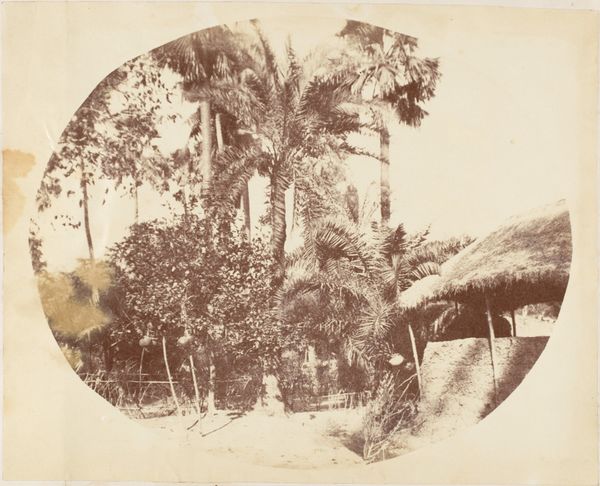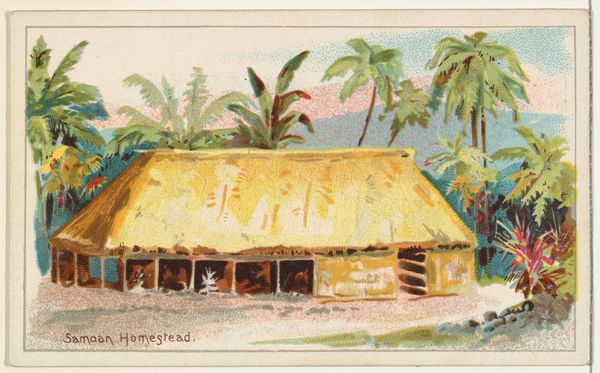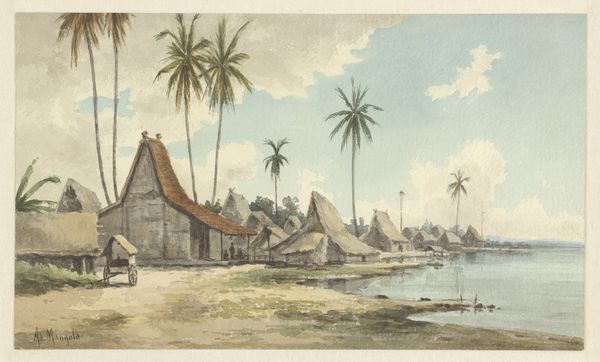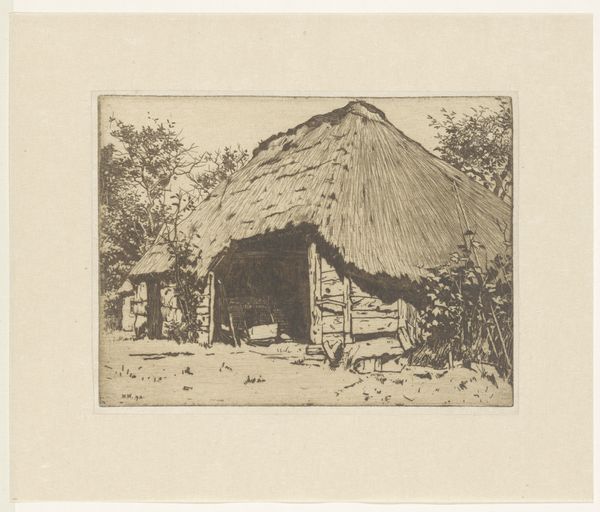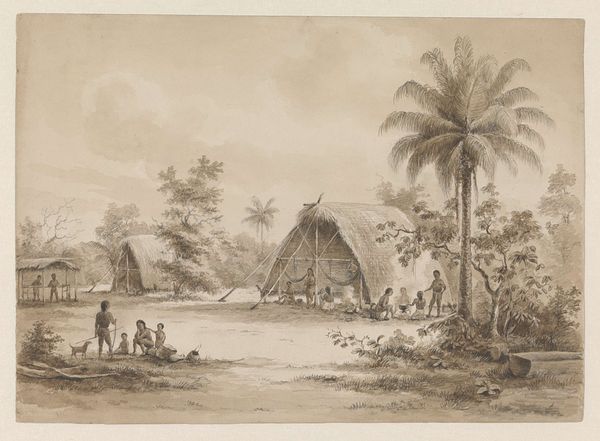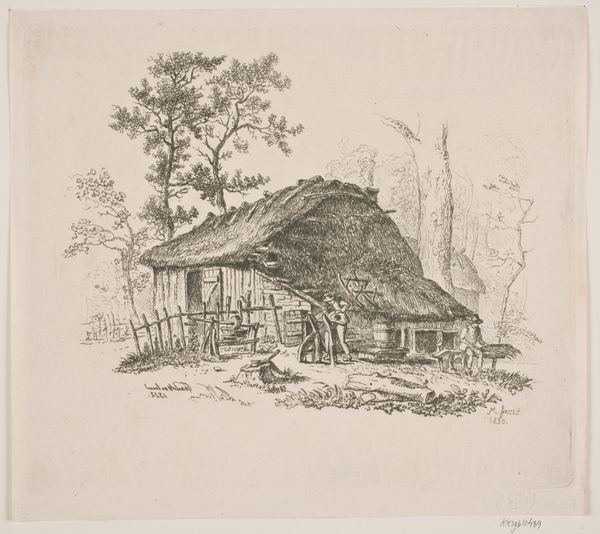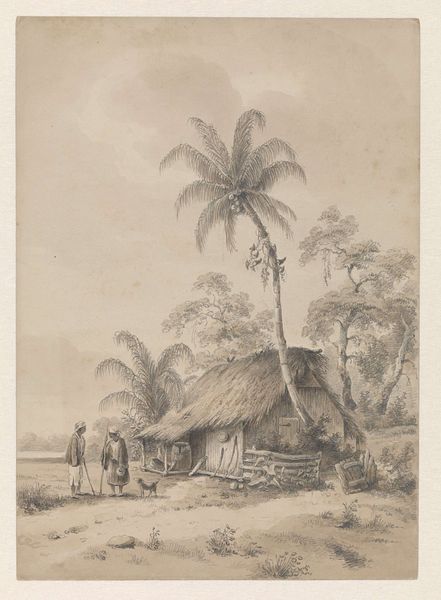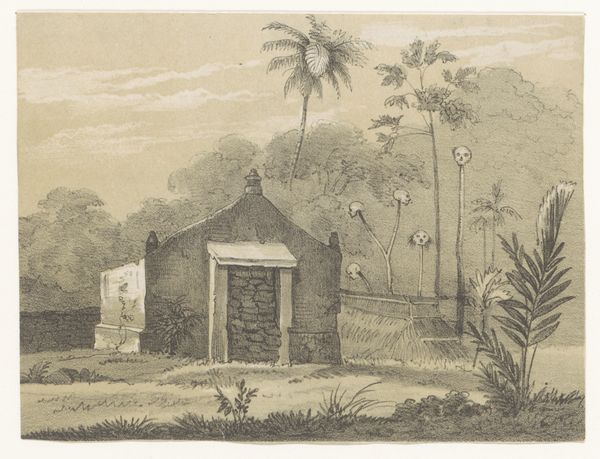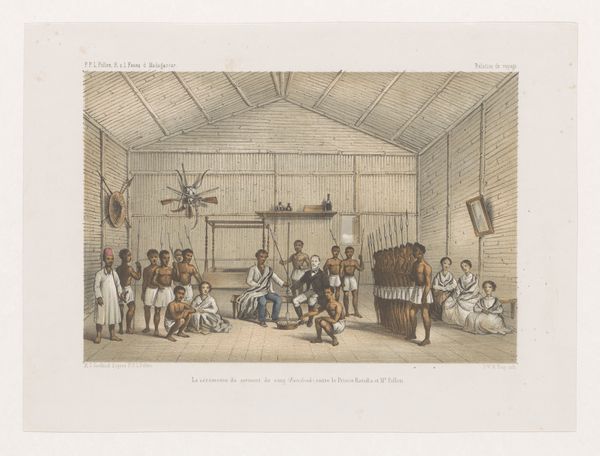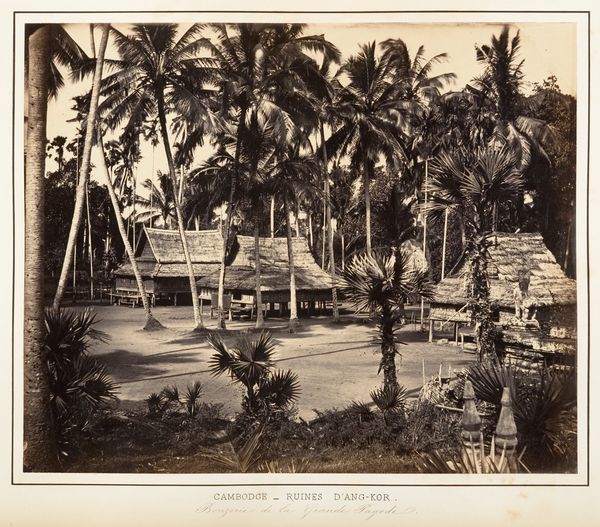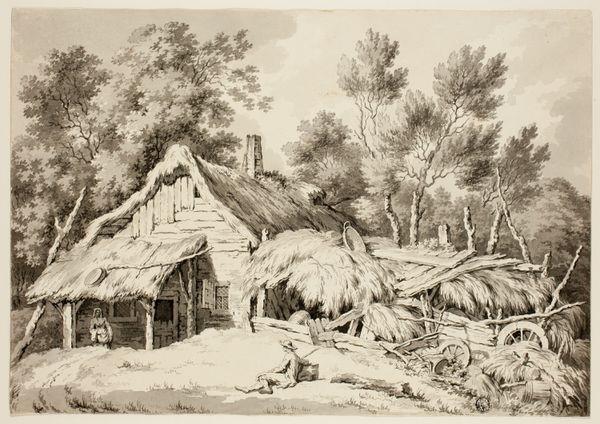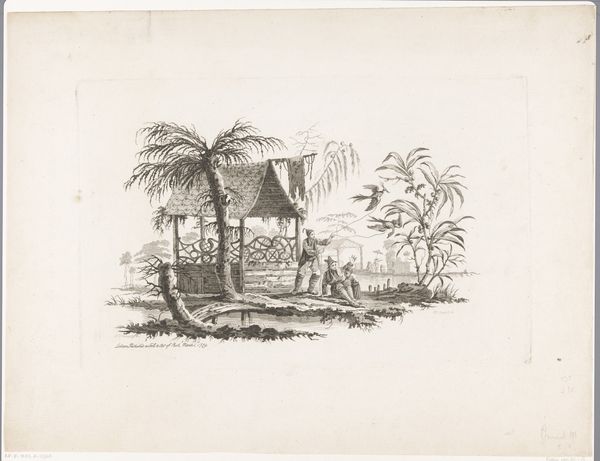
drawing, plein-air, watercolor
#
portrait
#
drawing
#
plein-air
#
landscape
#
watercolor
#
orientalism
#
watercolour illustration
#
genre-painting
#
watercolor
Dimensions: sheet: 8 7/8 x 17 in. (22.5 x 43.2 cm)
Copyright: Public Domain
Editor: Here we have "European Men in an African Jungle Lodge," created around 1886, artist unknown. It’s a watercolor drawing, and I find it so strange! The light feels odd and the whole scene a little…staged? What stands out to you? Curator: The very *idea* of this scene, doesn't it strike you? This lodge, rendered so meticulously in watercolor, attempts to depict an alien space made domestic. See how the woven roof imitates a kind of inverted basket, a forced 'home' imposed upon this landscape. What objects do you see as signifying this so-called "Europeanness"? Editor: Well, there's the violin, certainly…and the men’s clothing, very formal. But it’s all set against this undeniably "jungle-y" backdrop. The hats also, they seem a very obvious marker. It feels like a deliberate contrast. Curator: Exactly. Notice the placement of the weaponry – hanging almost casually alongside the hats and jackets, but undeniable in their presence. What do those tools signify in this space? How are the European figures differentiated, with one figure seemingly serenading the outside jungle itself? And that placid dog... a sentinel, perhaps? Consider how this image reinforces, even justifies, European presence. It renders them civilized, cultured within a space deemed savage and without culture of its own. Editor: So, it's not just a peaceful scene, but a visual statement of power? That makes me reconsider the dog's calm – it's not just relaxed, but confident, like it *knows* who's in charge. It also never occurred to me to look closely at how the figures were differentiated... interesting. Curator: Precisely! The drawing’s seeming neutrality becomes a loaded narrative when viewed through the lens of cultural symbolism and power dynamics. Every object, every figure contributes to the visual rhetoric. I urge you to look at how depictions of similar interior scenes function elsewhere, and how objects signal broader narratives around belonging and dispossession. Editor: Thanks, I definitely have a new perspective on this one!
Comments
No comments
Be the first to comment and join the conversation on the ultimate creative platform.

